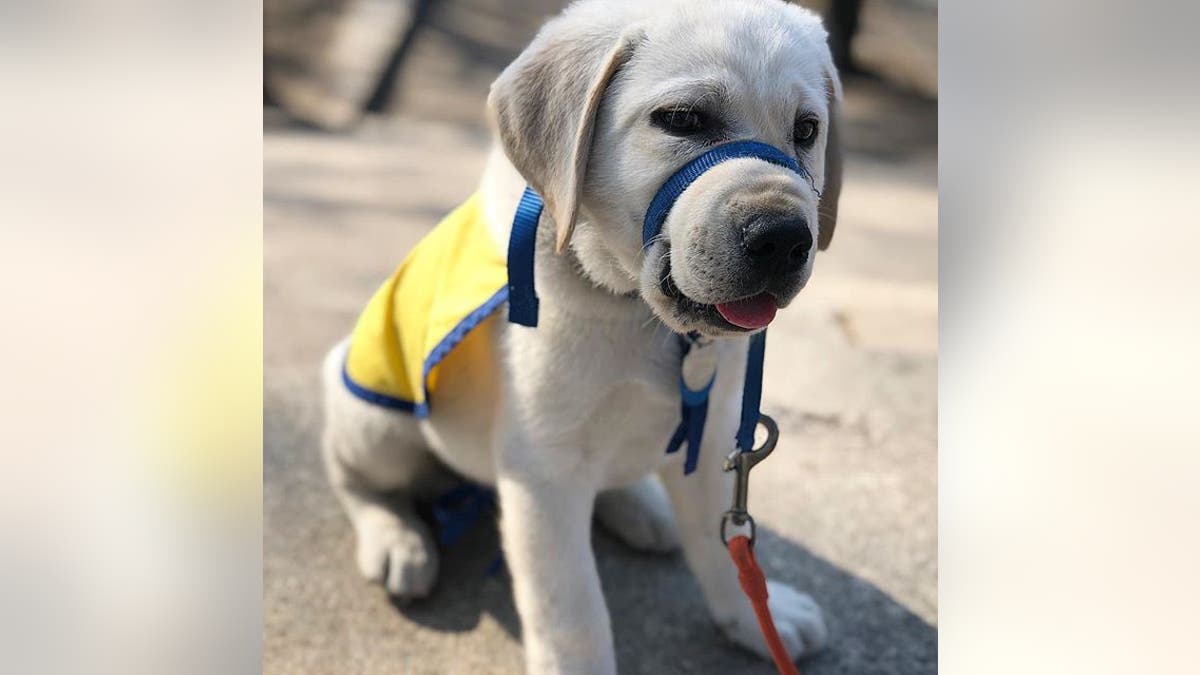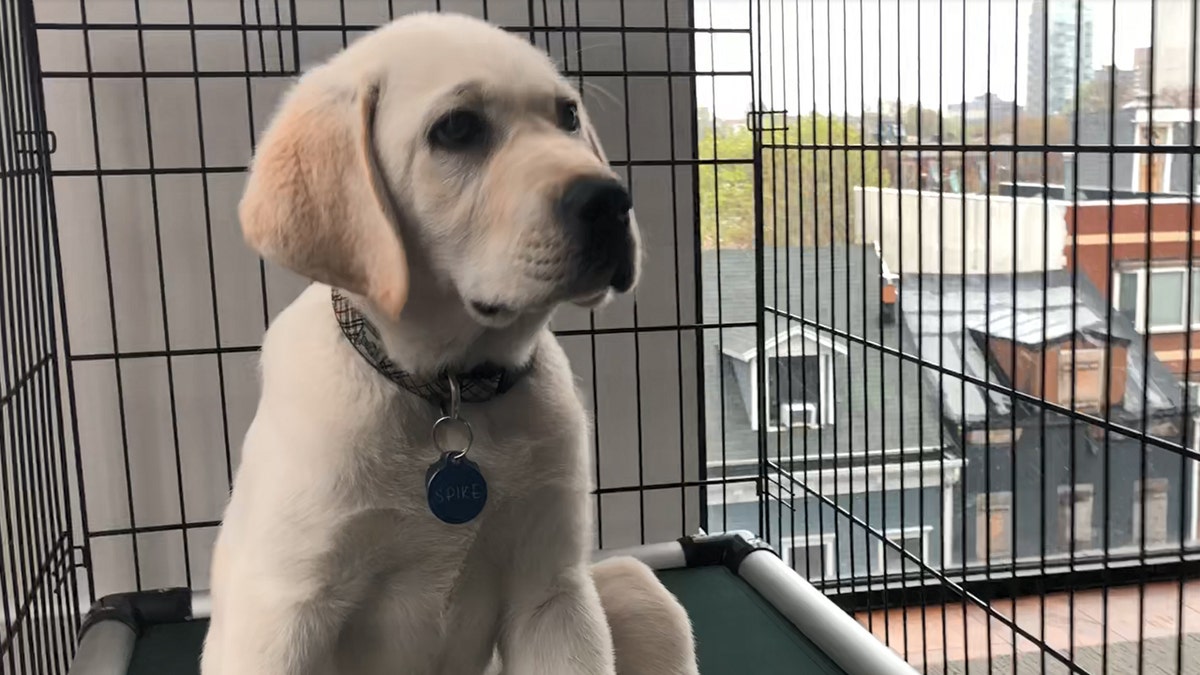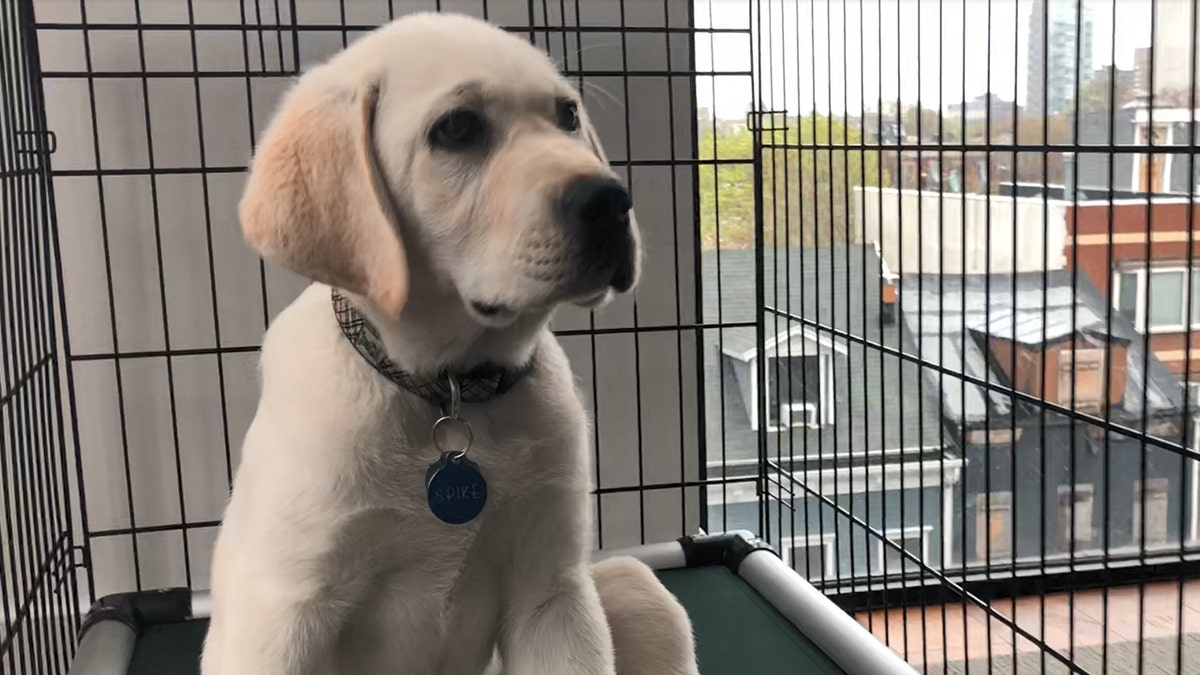
Spike is currently being raised for Canine Companions for Independence. Follow his journey at Fox News!
Welcome to Spike’s blog!
Raising a dog for Canine Companions for Independence (CCI) is incredibly rewarding — and also a lot of hard work. Whenever anyone hears about Spike, they instantly ask me how to train their own dog. So I thought I’d share some puppy training knowledge that I’ve learned from CCI.
This weeks topic: crate training.
Spike loves his kennel! It’s his cozy, quiet place to relax and have some downtime. At Canine Companions, puppies begin learning the Kennel command from the time they're just a few weeks old, and can snuggle in with their siblings in a puppy pile in the crate.
VETERINARIAN SAYS 'DOG YOGA' CAN IMPROVE DOGGIE POSTURE, BEHAVIOR
A dog’s kennel is one of the best tools you can have as a dog owner (or puppy-raiser). The most important tip to remember when crate training, however, is that the kennel is a positive, quiet environment for your puppy. You can start making the crate a great place to be by feeding your dog meals in their kennel. Nothing says “I want to go in my kennel” quite like a delicious bowl of kibble.

If the puppy is left alone in the crate with minimal interruptions, it will learn to accept the crate as a quiet place.
It is important that the puppy spend time in the crate throughout the day as well as sleep in the crate each night. Spending short periods of 30 minutes (or so) in the crate, several times during the day after exercise, play time or toileting (when the puppy should be ready for a nap), will help the puppy become acclimated to the crate.
The best way to accomplish easy crate training with the least amount of stress is to ignore the puppy when it is making noise. If the puppy is left alone in the crate with minimal interruptions, it will learn to accept the crate as a quiet place, and will spend its time in there sleeping. The more often the puppy is let out of the crate when making a fuss, the more it will learn to bark or whine to get out.
FOLLOW US ON FACEBOOK FOR MORE FOX LIFESTYLE NEWS
Spike likes to play with a toy in his crate, especially his KONG or Nylabone, while I’m supervising him. Mostly, the crate is a great place to sleep overnight or for naps during the day.


To learn more about being a volunteer puppy raiser, check out cci.org/raise.

